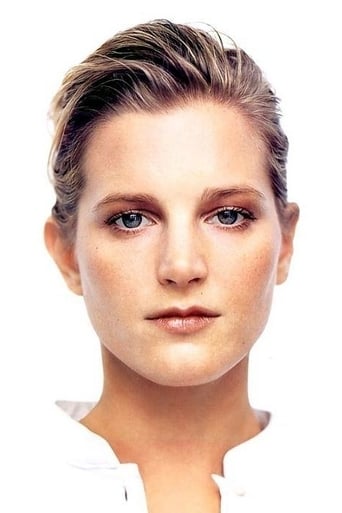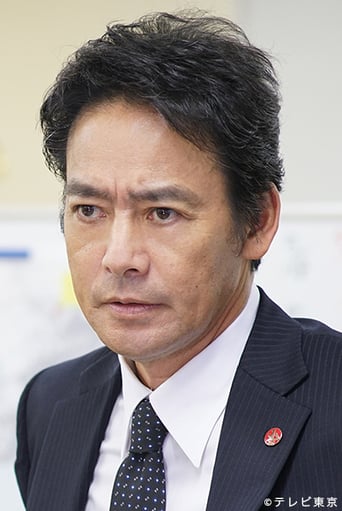robert-temple-1
This is a very unusual film. It was written, directed by, and starred some Japanese people, but was made in English in America. The initial title states that it is set in 'Corinth, Pennsylvania, six miles from Pittsburgh'. However, Corinth is a fictitious name, and the film was made in Braddock, Pennsylvania, a tiny and desolate former steel town which has now become an eastern suburb of Pittsburgh. The female lead is played by everybody's favourite waif actress, Bridget Fonda, looking as pale, vulnerable, and faintly palpitating as usual. She has such a way of allowing her cheeks to pucker and ripple with apprehension and anxiety, and her eyes can become haunted in an instant. And there is plenty of reason for apprehension in this film, so she gets lots of chances to act, that's for sure. The setting for this film epitomises the now notorious American 'rust belt', and if anyone wants to know who voted for Donald Trump and where they live, you need look no further than this movie to understand why those people are in despair about 'politics as usual'. The abandoned steel mill, which is at the heart of the film, says it all. (For British people, just think 'Rhondda Valley in Wales' and the closure of the coal mines.) Yes, Pennsylvania went for Trump, and here we see just why, even though this film was made 26 years ago. If things were that bad then, just imagine now. The director of the film was Hiroaki Yoshida, who according to IMDb only directed two films, of which this was the second. He adapted for the screen a story entitled IN A GROVE by the Japanese author Ryunsosuke Akutagawa, who died as long ago as 1927 at the age of only 35. He wrote the original story for the film RASHOMON (1950), so famously directed by Akira Kurosawa, later so brilliantly remade in America by Martin Ritt as THE OUTRAGE (1964), and remade once again in Thailand in 2011. This film also has many echoes of RASHOMON, since it tells the story of what happened in the steel mill and the town several times from the points of view of the different characters. Each version is different, and we are continually faced with the problem of who is lying. As the old video cover which I have states, it is 'a labyrinth of deception'. Jeff Fahey plays a local redneck who is obsessed with Fonda. He is rather creepy and also very annoying, but then I suppose he is meant to be. I could not say he is my favourite actor, and I would have preferred someone else in the part who had a third dimension to him. Fonda is the wife of a Japanese businessman, played by Hiroaki Murakami, who has just bought the abandoned and rotting steel mill, intends to demolish it, and build a children's' theme park on the site. The locals are resentful and do not like the idea at all. Things get very tense, to say the least of it. Fonda plays a complex character who met the businessman in Japan and married into wealth, having come from a 'poor white trash' background in a small town ironically called Harmony. She has never felt comfortable about the change in her lifestyle, and her doubts about her marriage coincide with her arrival in Pennsylvania from Japan. The film poses various problems: has someone been murdered, or has someone not been murdered, and if so, which of various possible people either did or did not do it, assuming whether it was either done or not done. This is a bit like playing the game of 'known unknowns' and 'unknown unknowns', not to mention 'known knowns' and 'unknown knowns'. The film is rather weird, placing as it does the bizarre Japanese mentality within a redneck context in a steel town near Pittsburgh. I wonder how such an extraordinary idea ever occurred to anyone. Certainly, the location of the real abandoned steel mill is used to the fullest extent possible in the filming, and that adds to the weird atmosphere, for I never saw so many teetering gangways, loose railings, dangling weights on sliding chains, multiple levels, see-through floors, perilous perches, thick levels of steel dust rising in clouds with every movement, and the whole phantasmagoria of the ghost factory. The film is a satisfying thriller with a difference.
vitachiel
So the director must be a fan of Akira Kurosawa, referring with this movie to Rashomon. Easy, take a clever plot and fill out the details with a very boring detective case. I'm glad Walsh was in this one, he is the only actor worth watching. Fonda is an expressionless wallflower and Fahey is the most prototypical B-movie actor I have ever seen.Really, why do people make such movies? Do they hope the audience gets tricked into buying (or renting) this film so they can make some profit out of this budget wasting creep? Most bad movies do have at least one or two scenes that are unintentionally funny or weird. This one lacks in all places (except, again, for Walsh, which is why I do not give it the lowest rating). Brainless anti-entertainment.
gridoon
"Iron Maze" has an intriguing script: the story of an attempted murder is unraveled through a series of conflicting flashbacks. Sadly, this script has been poorly directed, poorly photographed and poorly acted. The result is a muddled, unpleasant and self-indulgent film. Jeff Fahey is typically obnoxious, while Bridget Fonda looks pretty and enigmatic, but she doesn't really have to act to achieve those qualities; her actual performance is closer to a zombie than a living human being. And J.T. Walsh plays (surprise!) an officer of the law. The movie also has xenophobic political implications ("those evil Japanese!"), which it tries to reverse in the final scene. (*1/2)





